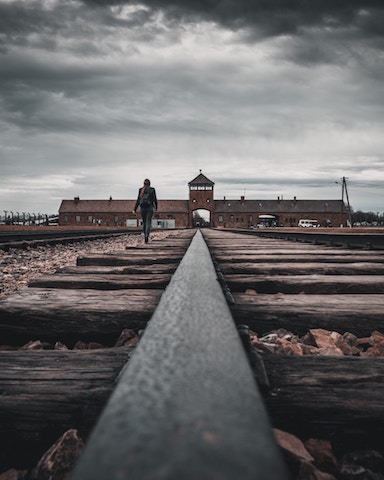In May, the Museum of Jewish Heritage — A Living Memorial to the Holocaust opened up its much anticipated Auschwitz exhibit to the public. Titled “Auschwitz: Not long ago, Not far away,” the New York City exhibition is the most comprehensive showcase on Auschwitz that’s ever been shown in North America. It also marks the seventy-fourth anniversary of the Jewish liberation from the infamous concentration camp.
Exploring the camp’s dual identity as a historical preservation site and as a symbol of how hatred and human barbarity impact us today, the exhibit has already brought over 200,000 visitors through its doors within its first couple months of opening.
Taking a Journey through the Past
The exhibit offers visitors an in-depth look into the perils and tragedies that Jewish prisoners faced. Comprised of historical artifacts, it details Jewish life and culture in pre-war Europe up through the rise of Nazism in WWII. As visitors progress through the exhibition, each room chronologically recounts the transformation of Auschwitz from a Polish town known as Oswiecim to the largest documented mass-murder site in human history, where an estimated one million people were killed.
Before even stepping into the exhibit, visitors will catch a haunting glimpse of a German, Model 2 freight-train car which transferred Jews to ghettos and concentration camps in occupied Poland during the war.
Inside the Auschwitz exhibit, visitors can explore twenty galleries filled with over 700 original objects on loan from over 20 institutions across the globe, including the Anne Frank House and Yad Vashem in Jerusalem. Hundreds of personal items like suitcases, shoes and eyeglasses from the era allow viewers to get an intimate glance into the life of the camp’s survivors and victims. Other artifacts on display include part of the original barracks for prisoners from the Auschwitz III-Monowitz camp, gas masks and several possessions of S.S. officers. Over 400 photographs are also sourced, mainly from the Auschwitz-Birkenau State Museum.
Unique to the NYC exhibition, The Museum of Jewish Heritage incorporates nearly 100 rare artifacts from its own collection that echo the experience of survivors and liberators who immigrated to the greater New York area after the war ended. Artifacts include: Alfred Kantor’s sketchbook and portfolio that contains over 150 original paintings and drawings from camps like Auschwitz and Theresienstadt; prisoner registration forms and IDs; personal letters; the trumpet that Louis Bannet (“the Dutch Louis Armstrong”) credited with saving his life while imprisoned in Auschwitz; and a Torah scroll rescued from the Bornplatz Synagogue in Hamburg, Germany.
The Exhibit’s Legacy and Impact
While the NYC exhibit continues to attract visitors, it has already left a lasting legacy for those who have experienced the exhibit’s message abroad. In a successful run at Madrid’s Arte Canal Exhibition Centre, it was expanded two times and attracted more than 600,000 attendees, making it one of the most visited exhibitions in Europe last year.
Bruce C. Ratner, the Chairman of the Museum’s Board of Trustees, says “As the title of the exhibit suggests, Auschwitz is not ancient history but living memory, warning us to be vigilant, haunting us with the admonition ‘Never Again.’ It is a prod to look around the world and mark the ongoing atrocities against vulnerable people.”
As human rights violations increase across the globe today, the exhibit is more meaningful than ever. The Washington Post reported last year that two-thirds of Millennials don’t know about Auschwitz while one-third of Americans don’t believe 6 million Jews perished in the Holocaust.
Ratner continues, “While we had all hoped after the Holocaust that the international community would come together to stop genocide, mass murder, and ethnic cleansing, these crimes continue. And there are more refugees today than at any time since the Second World War. So my hope for this exhibit is that it motivates all of us to make the connections between the world of the past and the world of the present, and to take a firm stand against hate, bigotry, ethnic violence, religious intolerance, and nationalist brutality of all kinds.”
My own parents were Holocaust survivors, and museums and exhibits like these help keep me beholden to my heritage — past, present and future. Even so, the extraordinary retelling of Jewish history is not just important for those with Jewish heritage, but for people of all backgrounds to learn, remember and experience these stories so that we might find the empathyand power to help end the unjust persecutions that occur today.
You can visit the Museum of Jewish Heritage’s website to buy tickets to the Auschwitz exhibit which runs through January 3, 2020.
This post originally appeared on Debrah Lee Charatan’s Philanthropy blog.






